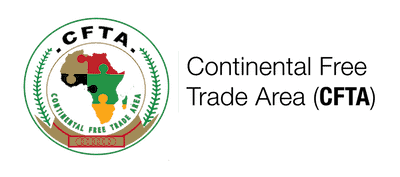The African Continental Free Trade Area (AfCFTA) is the lead task of the African Union’s Agenda 2063 which was established through an exhaustive and commonly helpful economic accord with the chief point of incorporating Africa’s market.
Amazingly, AfCFTA is conceivably the biggest streamlined commerce region on the planet with the ability to lift 30 million individuals out of outrageous destitution by associating over 1.3 billion individuals across 55 nations having a joined (GDP) of about US$3.4 trillion.

The Agreement setting up AfCFTA (the “Arrangement“) was endorsed on 21st March 2018 yet came into power on 30th May 2019 after the store of the instruments of confirmation by 24 nations. As of April 19, 2021, 54 nations have consented to the Arrangement while 36 nations (counting Nigeria) have saved their instruments of confirmation with the African Union Commission (AUC) Chairperson. Prominently, exchanging under the AfCFTA Agreement authoritatively started on January 1, 2021, subject to dealings on conventions and instruments of exchange.
The Journey so far
It was at first believed that Phase II dealings would be finished by January 2021, however because of the COVID-19 pandemic, the timetable has been deferred.
The Agreement (PDF) sums up AfCFTA’s objectives into eight targets which incorporates, making a solitary market for labor and products, making a changed market for labor and products, adding to the development of capital and individuals and working with venture, making a mainland customs association, advancing feasible and comprehensive financial turn of events and sexual orientation uniformity, upgrading seriousness of economies of State Parties and in conclusion settling difficulties of numerous enrollments while assisting local and mainland reconciliation measure.
Must Read: Shocking: African Crypto Trade, Quidax Raised More Than $3 Million
Past the targets recorded in the Agreement, AfCFTA looks to support Africa’s monetary yield to around $29 trillion by 2050 and increment intra-African exchange by 52.3%.
How does the AfCFTA relate to the Nigerian IP market
Lately, the worldwide and worldwide economy has been driven by advancement, innovativeness, information, and innovation every one of which is in a general sense upheld by Intellectual Property (IP) and Intellectual Property Rights (IPR).
Examination has shown that nations with the biggest economies are to a great extent driven by IP. For non-industrial nations, IP can be utilized to advance financial improvement by empowering development.
Must Read: NCC Cleared To Roll Out 5G in Nigeria
To support development, there should be an empowering climate defended by a vigorous IP Policy that will guarantee that creatives and financial backers recuperate the expense of venture and amplify the advantages produced from their advancements or innovative work.
A run of the mill model is Nigeria which is home to a rich and dynamic imaginative area, star among them the Nigerian entertainment world, additionally alluded to as Nollywood. As indicated by a 2016 IMF report, the Nigerian entertainment world at present records for ?853.9 billion ($7.2 billion), or 1.42 percent of Nigeria’s GDP and seemingly the country’s second-greatest wellspring of work after farming.
Intellectual Property Rights has to be looked into within Nigeria and beyond
Nigeria’s inventive and imaginative ventures, nonetheless, stretch a long way past the entertainment world and incorporate exercises going from music and distribution to PC programming and the assembling businesses; each with huge potential for development.
With AfCFTA, creatives and financial backers can approach a bigger market by broadening the regional acknowledgment and insurance of IP to its 54-signatory part domains. With a drawn out regional acknowledgment and assurance of IP, creatives can take advantage of and augment the worth in IP by profiting from the utilization of IP past its public regions.
Must Read: All You Need To Know About The Nigerian Digital Currency
All the more along these lines, the augmentation of regional acknowledgment and assurance of IP will lessen the expense of enrolling and shielding IPR in domains of signatory individuals.
AfCTA’s broad reach and impact can be used to accomplish the normalization and unification of IP approaches in Africa by remembering a hearty IP strategy for the IPR Protocol which will be relevant in signatory individuals nations upon reception. The IPR Protocol may likewise be utilized as a vehicle to build up an incorporated and coordinated IP library (perhaps with branches in part nations) for African Countries.
All in all, AfCFTA is an excellent drive that might conceivably grow Africa’s financial chances and fundamentally work on the economy of African nations. Nonetheless, to completely accomplish its goal, AfCFTA should open the financial worth of IP in Africa by guaranteeing that while labor and products are being moved uninhibitedly across African regions, the underlining IPRs are ensured.



